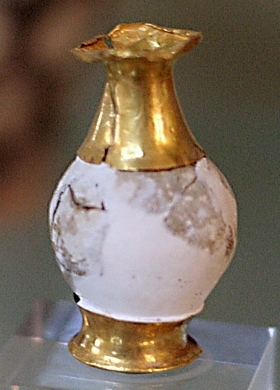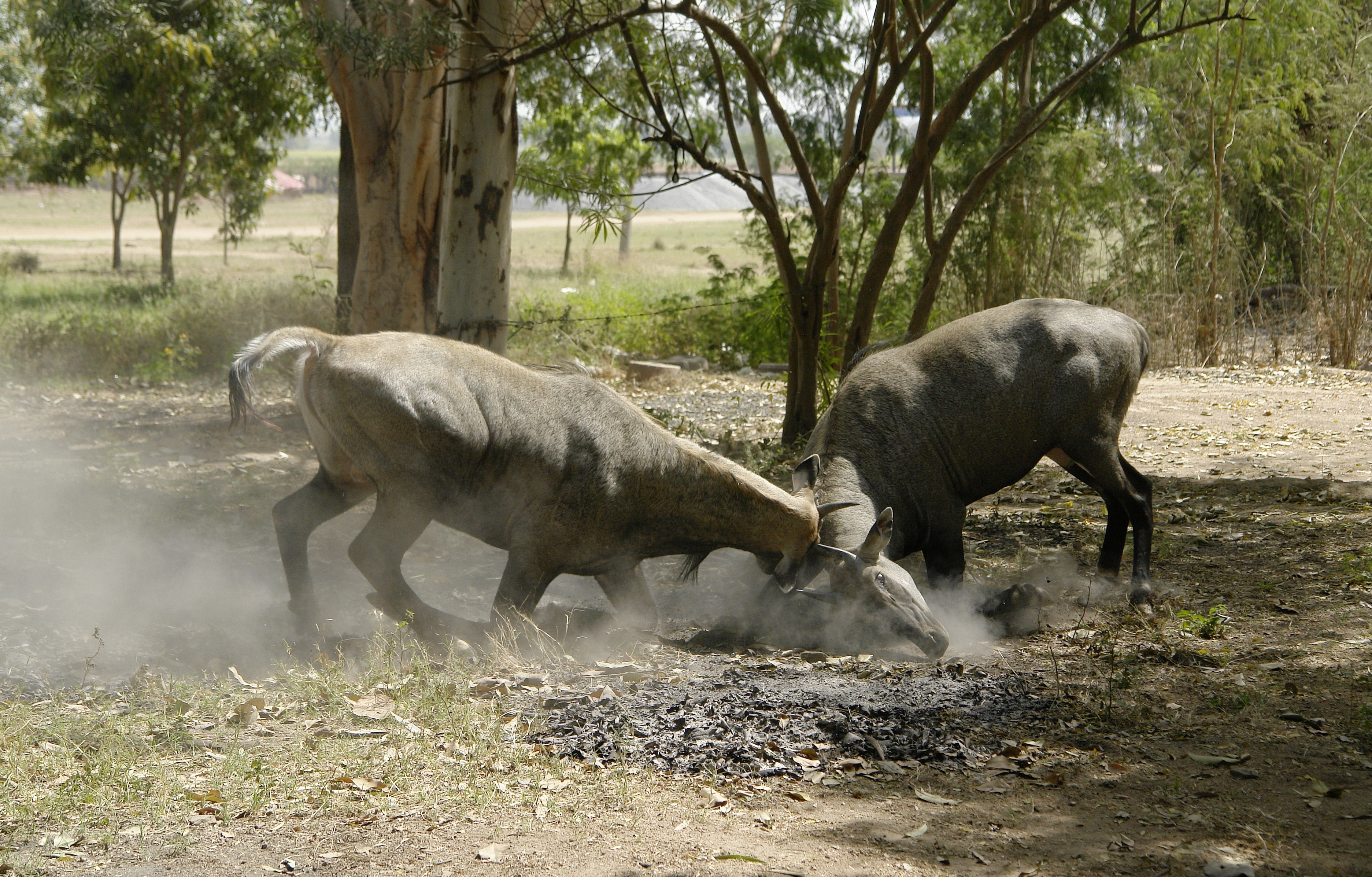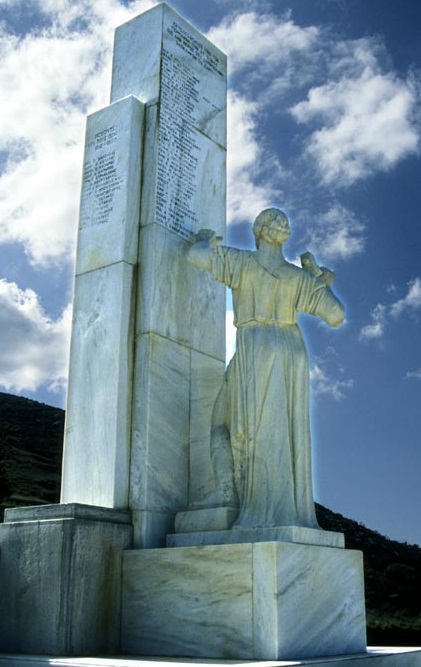|
Skourvoula Executions
The Skourvoula executions ( el, εκτελέσεις στα Σκούρβουλα) refer to the mass execution by firing squad of 36 civilians of which 22 women, at the village of Skourvoula in Crete, Greece by German Wehrmacht forces on 14 August 1944 during World War II. Background The village of Skourvoula ( el, Σκούρβουλα) is located at an altitude of , southwest of Heraklion. It is built on the southern slopes of Mt Psiloritis, overlooking the Messara Plain. During the Axis occupation of Crete, the entire region of Psiloritis sheltered local resistance fighters and British SOE agents. To intimidate the civilian population, General Friedrich-Wilhelm Müller who was commanding the German garrison on Crete during the summer of 1944, had issued orders for retaliatory measures against the population of "hostile" villages.Marlen von Xylander ''Die deutsche Besatzungsherrschaft auf Kreta 1941–1945'', Rombach, Freiburg, 1989, p.125. The executions On 12 August 1944, ... [...More Info...] [...Related Items...] OR: [Wikipedia] [Google] [Baidu] |
Firing Squad
Execution by firing squad, in the past sometimes called fusillading (from the French ''fusil'', rifle), is a method of capital punishment, particularly common in the military and in times of war. Some reasons for its use are that firearms are usually readily available and a gunshot to a vital organ, such as the brain or heart, most often will kill relatively quickly. A firing squad is normally composed of several soldiers, all of whom are usually instructed to fire simultaneously, thus preventing both disruption of the process by one member and identification of who fired the lethal shot. To avoid disfigurement due to multiple shots to the head, the shooters are typically instructed to aim at the heart, sometimes aided by a paper or cloth target. The prisoner is typically blindfolded or hooded as well as restrained. Media portrayals have frequently shown the condemned being offered a final cigarette as well. Executions can be carried out with the condemned either standing or sitt ... [...More Info...] [...Related Items...] OR: [Wikipedia] [Google] [Baidu] |
Kamares, Crete
Kamares ( el, Καμάρες) is a village in south-central Crete, Greece. It is the location of an archaeological site of a Minoan sacred cave. The sacred cave at Kamares is slightly offset from a saddle in the Psiloriti Range virtually aligned with the location of nearby Phaistos. Some of the best examples of Middle Minoan pottery have been recovered from the Kamares cave.Gerald Cadogan (1991) '' Palaces of Minoan Crete'', Routledge, 164 pages Kamares has provided the type name for Kamares ware, a ceramic type dating from MM IA, or the First Palace Period. This pottery is a light-on-dark polychrome ware, with forms including jugs and cups. See also *Hagia Triada Hagia Triada (also Ayia Triada, Agia Triada, Agia Trias, , " Holy Trinity") is the archaeological site of an ancient Minoan settlement. Hagia Triada is situated on the western end of a prominent coastal ridge, with Phaistos at the eastern end and ... References Minoan sites in Crete Ancient caves of Gr ... [...More Info...] [...Related Items...] OR: [Wikipedia] [Google] [Baidu] |
Violence Against Women In Greece
Violence is the use of physical force so as to injure, abuse, damage, or destroy. Other definitions are also used, such as the World Health Organization's definition of violence as "the intentional use of physical force or power, threatened or actual, against oneself, another person, or against a group or community, which either results in or has a high likelihood of resulting in injury, death, psychological harm, maldevelopment, or deprivation."Krug et al."World report on violence and health", World Health Organization, 2002. Internationally, violence resulted in deaths of an estimated 1.28 million people in 2013 up from 1.13 million in 1990. However, global population grew by roughly 1.9 billion during those years, showing a dramatic reduction in violence per capita. Of the deaths in 2013, roughly 842,000 were attributed to self-harm (suicide), 405,000 to interpersonal violence, and 31,000 to collective violence (war) and legal intervention. For each single death due to vio ... [...More Info...] [...Related Items...] OR: [Wikipedia] [Google] [Baidu] |
Massacres Of Women
A massacre is the killing of a large number of people or animals, especially those who are not involved in any fighting or have no way of defending themselves. A massacre is generally considered to be morally unacceptable, especially when perpetrated by a group of political actors against defenseless victims. The word is a loan of a French term for "butchery" or "carnage". A "massacre" is not necessarily a "crime against humanity". Other terms with overlapping scope include war crime, pogrom, mass killing, mass murder, and extrajudicial killing. Etymology The modern definition of ''massacre'' as "indiscriminate slaughter, carnage", and the subsequent verb of this form, derive from late 16th century Middle French, evolved from Middle French ''"macacre, macecle"'' meaning "slaughterhouse, butchery". Further origins are dubious, though may be related to Latin ''macellum'' "provisions store, butcher shop". The Middle French word ''macecr'' "butchery, carnage" is first record ... [...More Info...] [...Related Items...] OR: [Wikipedia] [Google] [Baidu] |
Massacres Of Men
A massacre is the killing of a large number of people or animals, especially those who are not involved in any fighting or have no way of defending themselves. A massacre is generally considered to be morally unacceptable, especially when perpetrated by a group of political actors against defenseless victims. The word is a loan of a French term for "butchery" or "carnage". A "massacre" is not necessarily a "crime against humanity". Other terms with overlapping scope include war crime, pogrom, mass killing, mass murder, and extrajudicial killing. Etymology The modern definition of ''massacre'' as "indiscriminate slaughter, carnage", and the subsequent verb of this form, derive from late 16th century Middle French, evolved from Middle French ''"macacre, macecle"'' meaning "slaughterhouse, butchery". Further origins are dubious, though may be related to Latin ''macellum'' "provisions store, butcher shop". The Middle French word ''macecr'' "butchery, carnage" is first record ... [...More Info...] [...Related Items...] OR: [Wikipedia] [Google] [Baidu] |
Massacres In Greece During World War II
A massacre is the killing of a large number of people or animals, especially those who are not involved in any fighting or have no way of defending themselves. A massacre is generally considered to be morally unacceptable, especially when perpetrated by a group of political actors against defenseless victims. The word is a loan of a French term for "butchery" or "carnage". A "massacre" is not necessarily a "crime against humanity". Other terms with overlapping scope include war crime, pogrom, mass killing, mass murder, and extrajudicial killing. Etymology The modern definition of ''massacre'' as "indiscriminate slaughter, carnage", and the subsequent verb of this form, derive from late 16th century Middle French, evolved from Middle French ''"macacre, macecle"'' meaning "slaughterhouse, butchery". Further origins are dubious, though may be related to Latin ''macellum'' "provisions store, butcher shop". The Middle French word ''macecr'' "butchery, carnage" is first recor ... [...More Info...] [...Related Items...] OR: [Wikipedia] [Google] [Baidu] |
1944 In Greece
Events Below, the events of World War II have the "WWII" prefix. January * January 2 – WWII: ** Free French General Jean de Lattre de Tassigny is appointed to command French Army B, part of the Sixth United States Army Group in North Africa. ** Landing at Saidor: 13,000 US and Australian troops land on Papua New Guinea, in an attempt to cut off a Japanese retreat. * January 8 – WWII: Philippine Commonwealth troops enter the province of Ilocos Sur in northern Luzon and attack Japanese forces. * January 11 ** President of the United States Franklin D. Roosevelt proposes a Second Bill of Rights for social and economic security, in his State of the Union address. ** The Nazi German administration expands Kraków-Płaszów concentration camp into the larger standalone ''Konzentrationslager Plaszow bei Krakau'' in occupied Poland. * January 12 – WWII: Winston Churchill and Charles de Gaulle begin a 2-day conference in Marrakech. * January 14 &ndash ... [...More Info...] [...Related Items...] OR: [Wikipedia] [Google] [Baidu] |
Nazi War Crimes In Greece
Nazism ( ; german: Nazismus), the common name in English for National Socialism (german: Nationalsozialismus, ), is the far-right politics, far-right Totalitarianism, totalitarian political ideology and practices associated with Adolf Hitler and the Nazi Party (NSDAP) in Nazi Germany. During Hitler's rise to power in 1930s Europe, it was frequently referred to as Hitlerism (german: Hitlerfaschismus). The later related term "neo-Nazism" is applied to other far-right groups with similar ideas which formed after the Second World War. Nazism is a form of fascism, with disdain for liberal democracy and the parliamentary system. It incorporates a dictatorship, fervent antisemitism, anti-communism, scientific racism, and the use of eugenics into its creed. Its extreme nationalism originated in pan-Germanism and the ethno-nationalist ''Völkisch movement, Völkisch'' movement which had been a prominent aspect of German nationalism since the late 19th century, and it was strongly i ... [...More Info...] [...Related Items...] OR: [Wikipedia] [Google] [Baidu] |
Mass Murder In 1944
Mass is an intrinsic property of a body. It was traditionally believed to be related to the quantity of matter in a physical body, until the discovery of the atom and particle physics. It was found that different atoms and different elementary particles, theoretically with the same amount of matter, have nonetheless different masses. Mass in modern physics has multiple definitions which are conceptually distinct, but physically equivalent. Mass can be experimentally defined as a measure of the body's inertia, meaning the resistance to acceleration (change of velocity) when a net force is applied. The object's mass also determines the strength of its gravitational attraction to other bodies. The SI base unit of mass is the kilogram (kg). In physics, mass is not the same as weight, even though mass is often determined by measuring the object's weight using a spring scale, rather than balance scale comparing it directly with known masses. An object on the Moon would weigh le ... [...More Info...] [...Related Items...] OR: [Wikipedia] [Google] [Baidu] |
Viannos Massacres
The Viannos massacres ( el, Σφαγές της Βιάννου / Ολοκαύτωμα της Βιάννου) were a mass extermination campaign launched by German forces against the civilian residents of around 20 villages located in the areas of east Viannos and west Ierapetra provinces on the Greek island of Crete during World War II. The killings, with a death toll in excess of 500,Γ. Δ. Χρηστάκης, Κ. Γ. Στεφανάκης. Επαρχία Βιάννου, 1940-1945: το ολοκαύτωμα του 1943', Σύλλογος Βιαννιτών Ηρακλείου "Ο Πατούχας", 2000Fermor, Patrick Leigh; Cooper, Artemis. ''Words of Mercury'', John Murray, London, 2004, .Lewis, Damien. ''Churchill's Secret Warriors: The Explosive True Story of the Special Forces Desperadoes of WWII'', Quercus Editions Ltd, 2014; . [...More Info...] [...Related Items...] OR: [Wikipedia] [Google] [Baidu] |
Malathyros Executions
The Malathyros executions ( el, εκτελέσεις στη Μαλάθυρο) refer to the mass execution by firing squad of 61 male civilians from the village of Malathyros in Crete, Greece by German forces on 28 August 1944 during World War II. Background The village of Malathyros (also spelled Malathiros, el, Μαλάθυρος) is located at an altitude of , southeast of Kissamos and southwest of Chania. During the Axis occupation of Crete, the village had a population of approximately 300 people who sheltered British SOE personnel and aided local resistance fighters. Commander of the German garrison on Crete at the time was General Friedrich-Wilhelm Müller. The executions In the early morning of 28 August 1944, German forces surrounded Malathyros. Male villagers were dragged from their homes and herded to the school. For the entire day, they were interrogated to reveal the whereabouts of the British, but they refused to cooperate despite being tortured and brutally b ... [...More Info...] [...Related Items...] OR: [Wikipedia] [Google] [Baidu] |
Holocaust Of Kedros
The Holocaust of Kedros ( el, Ολοκαύτωμα του Κέντρους/Κέδρους), also known as the Holocaust of Amari ( el, Ολοκαύτωμα του Αμαρίου), was the mass murder of the civilian residents of nine villages located in the Amari Valley on the Greek island of Crete during its occupation by the Axis powers in World War II. The massacre was a reprisal operation mounted by Nazi German forces.Παντινάκης, Μανόλης Α.. ''Νικητές στο απόσπασμα: το Αμάρι στις φλόγες'', εκδ. Καλαϊτζάκης, 2008. The operation was carried out on 22 August 1944 by Wehrmacht infantry and was followed in the coming days by the razing of most villages, looting, pillage of livestock and destruction of harvests.Beevor, Antony. ''Crete: The Battle and the Resistance'', John Murray Ltd, 1991. Penguin Books, 1992.Leong Kok Wey, Adam. ''Killing the Enemy: Assassination Operations in World War II'', I.B. Tauris ... [...More Info...] [...Related Items...] OR: [Wikipedia] [Google] [Baidu] |






